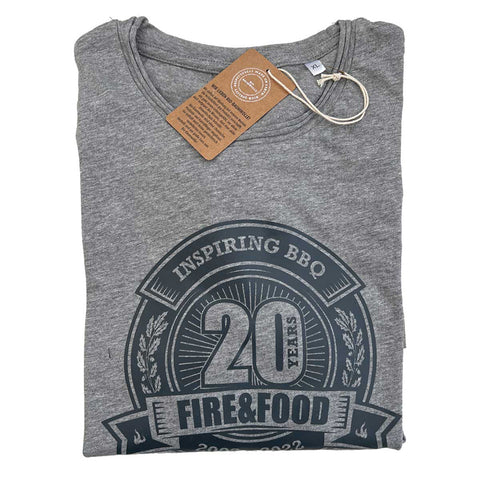Fancy some (Easter) lamb
Someone plays the innocent lamb, is as docile as a lamb or has the patience of a lamb: lamb has a firm place in our language - and for many, roast lamb is as much a part of the Easter celebration as egg hunting. Lamb is in season all year round and is a speciality for health-conscious connoisseurs: tender, low in calories and high in protein. Its valuable ingredients make it a perfect building block for a balanced diet. Lamb is very suitable for grilling because it is evenly streaked with fat and can therefore withstand higher temperatures without drying out. With different herbs and spices, you can always conjure up new, varied dishes.
Delicious and healthy
Opinions often differ when it comes to lamb: some love it, others can't stand the taste at all, as they think of lamb as very strong-tasting mutton. The term "lamb" can be used to describe the meat of sheep up to one year old, and if you want to be on the safe side in terms of taste, you should choose lamb meat that was no older than six months, as the unpopular "mutton taste" only develops from around the eighth month of life. This peculiar, greasy taste is caused, among other things, by the higher fat content of older animals. Lamb fat has a high melting point and should be eaten hot, which is gentle on the taste buds and also on digestion. The meat of suckling lambs that are between three and four months old at the time of slaughter is particularly delicious and tender. When ready for slaughter, a sheep can weigh up to forty kilos, depending on the breed. Lamb is also nutritionally impressive: with 18 grams of highly digestible protein per 100 grams of meat, but only 3.7 grams of fat, the muscle meat is particularly valuable. As with all types of meat, the B vitamins dominate the vitamins. Just 100 grams of lamb from the leg contains an adult's entire daily requirement of vitamin B12. In addition, there are valuable minerals such as zinc and iron, which are important for blood formation, as well as linoleic acids, which are considered to be anti-cancer and antioxidant and are said to lower LDL cholesterol. Young lamb can be used in the week of slaughter, as it does not need to hang to become tender and soft. The fact that lamb dishes are considered traditional festive foods at Easter goes back to a Jewish ritual, the "Lamb of God" sacrificed at Passover. Christians use it to commemorate the suffering and death of Jesus Christ and the forgiveness of sins. In the Christian sense, the lamb itself stands for life and is also seen as a symbol of purity and peace. The lamb meat that is served at Easter is usually a little more expensive than at other times of the year. This is partly because the lambs are born during the Christmas period and the farmers have to spend more time on keeping them in stables and feeding them at this time of year.
Meat from our own region
Sheep and lambs are ancient farm animals of mankind and are more or less common in Germany depending on the region. They originally come from the area of present-day Iraq and reached Europe as domestic sheep around 7000 years before the common era, where they were man's most important domestic animal until the Bronze Age. There is a great diversity of sheep breeds; in Germany alone there are 40 sheep breeds, which are divided into wool, meat and dairy breeds. The most common breeds worldwide are the Merino sheep and the black-headed meat sheep. The average per capita consumption in Germany is around one kilogram of sheep and goat meat per year.
That is relatively little when you compare it to the annual per capita consumption of pork in our country: at 54 kilograms, it is significantly higher. Only 38 percent of the lamb meat consumed in Germany currently comes from here. The largest share from abroad, almost 85 percent, comes from New Zealand - this applies above all to frozen goods. The state sheep breeding associations are concerned about this development. Sheep populations are currently declining nationwide. In addition to the difficult economic situation, there is bluetongue disease, which spread at Easter 2008 and was fatal for many sheep. This infectious disease, transmitted by a mosquito, is harmless to humans and has so far mainly been found in warmer countries in southern Europe. Due to climate change, the pathogen has now made its way into Germany too. Anyone who values healthy, ecologically sound pasture farming and short transport routes for their grilled lamb chops should look for meat from their own region when shopping. This is not only worthwhile for the good environmental conscience, but also for the very good quality of the meat. From North Friesland to Bavaria, the animals grow up outdoors in nature and feed on the grasses, herbs and plants typical of each region. This gives the lamb a very unique taste depending on the region. In northern Germany, for example, the so-called “salt marsh lambs” are a culinary speciality. They live on the dikes of the North and Baltic Sea coasts and are extremely versatile: they provide warm wool, keep the grass short, tread down the dike soil and thus actively
Coastal protection. Their exposure to the salty air and the special vegetation by the sea gives them a very spicy taste. Further south, in the Lüneburg Heath, the wild aroma of the black-faced Heidschnucken sheep with their bizarrely twisted horns is a delicacy known beyond the borders. They also carry out important landscape maintenance by keeping the heath short, pulling out birch seedlings and preventing the areas from becoming overgrown with grass. This also applies to cultural landscapes in the Rhön, the Swabian Alb, the Altmühl Valley, the Upper Palatinate and the Black Forest. The Alpine lamb is at home in the Bavarian Alps, but also in Austria, Italy and Switzerland, where it finds plenty of wild herbs and typical alpine grasses at lofty heights. In Germany, only around six percent of all sheep are kept according to the strict criteria of organic farming, whereas in Denmark, Finland, Sweden and Austria the figure is well over 20 percent. Currently, 60 percent of all organic lamb is sold directly from the farm or via weekly markets and producer associations. 35 percent goes to restaurants and large kitchens and only the small remaining 5 percent reaches the retail trade.
Young meat meets crisp vegetables
When it comes to a holiday roast, leg, back or shoulder are the right pieces, as they can be braised, fried or grilled as you wish and are also enough for a larger group. If you have the butcher remove the bone from the shoulder or leg, these pieces are also very suitable for stuffing. Another advantage of lamb is its short cooking time: a two-kilogram leg cooks in a closed grill system at 180 degrees for about an hour until it is nice and pink but no longer bloody, while the back is perfect after just a quarter of an hour at 170 degrees. Depending on their thickness, lamb chops take one and a half to two minutes per side and the liver can also be grilled quickly and deliciously, although the skin must be removed first. If you have several hours of time and leisure, you might opt for the barbecue method at a low temperature of 90 degrees - after four to six hours, depending on the size of the piece of meat, the roast is ready. The traditional accompaniments are green beans, young carrots or tender quarters of savoy cabbage. If you prefer a Mediterranean style, choose zucchini, fennel or braised tomatoes and season with tarragon, oregano, rosemary, thyme, sage or lavender. Garlic is also a must. Completely different, exciting flavour nuances open up - very British - with mint or Asian with curry and cumin. Lamb also tolerates a marinade overnight very well.
Lamb meat: versatile
The pasture-based rearing and natural feed are mainly responsible for the tender and aromatic meat of the lambs. It should be firm and pink, with a fine structure and an even fat edge. Lamb can be prepared in a variety of ways. As an alternative to the classic leg of lamb, the butcher can also cut the leg into the lower leg, upper leg, rump and shank if desired. These cuts are ideal for roasting, grilling and braising.
Slices from the leg ➊ make the traditional lamb steaks. The saddle of lamb ➋ also gives a taste sensation and, when prepared and presented accordingly, is also on the menu in good restaurants as a rack of lamb or crown of lamb. The 2 to 3 centimetre thick steaks, known as lamb chops, are also cut from the saddle and are ideal for grilling. Chops or stalk chops come from the saddle – with the bone – and can be grilled to create a tasty result. The shoulder of lamb ➌, also known as the shoulder or shovel, is usually deboned and rolled for roasting and braising. The meat is also good for grilled skewers and leftover pieces give any vegetable stew a strong, hearty flavour. The meat from the neck and throat ➍ is particularly suitable for lamb curries, stews such as Irish stew or casseroles. The fillet ➎ is the most tender cut of lamb and is cut from the loin chop. It is also a delicious alternative to beef fillet. It is best to grill it briefly on all sides and then cut into slices to serve. Due to its high fat content, lamb breast ➏ is also suitable for all stews and casseroles. It is also easy to stuff if you have the butcher cut a pocket into it. A clever variant for the grill is lamb ribs. Lamb salmon ➐ is similar in color to the fish of the same name and is cut from the saddle of lamb. It is ideal for grilling at high temperatures - although it can only be grilled briefly on each side. This cut is extremely low in fat and is a great addition to any summer barbecue party. The lamb shank ➑ is cut from the lower part of the leg; one shank is allowed per portion. It is ideal for braising at low temperatures.
BBQ lamb: knuckle & shoulder with bacon beans and braised tomatoes
Fancy a delicious lamb recipe? Then take a look HERE in our FIRE&FOOD recipe database! We also have an e-dossier on the topic of "Tasty lamb dishes" available for free in our shop! --> Go to the e-dossier!





















